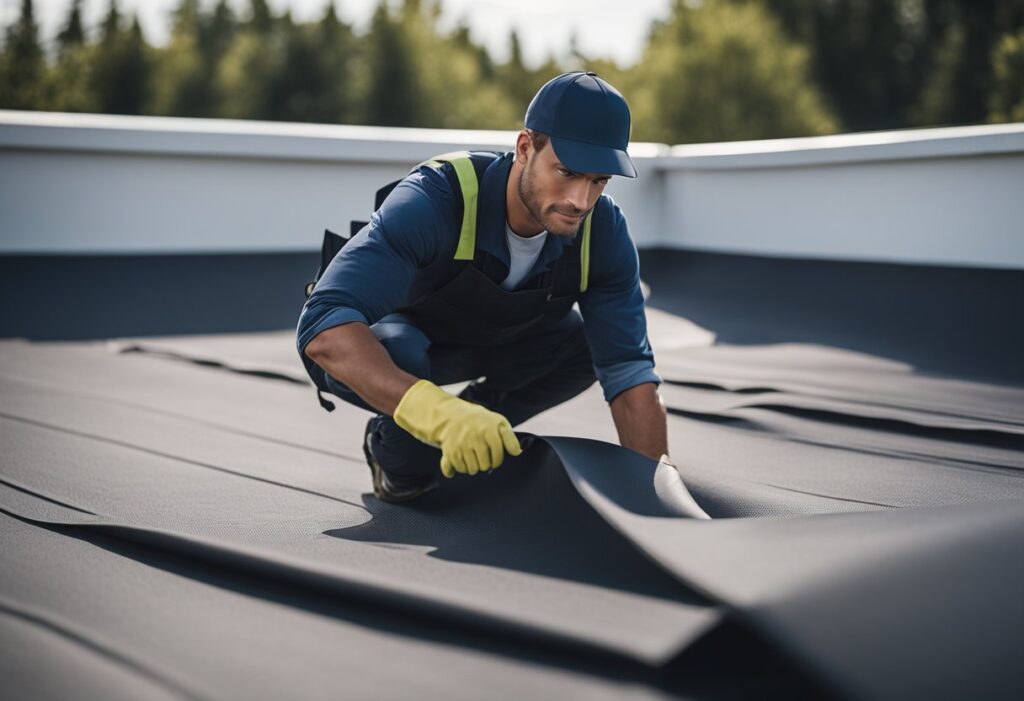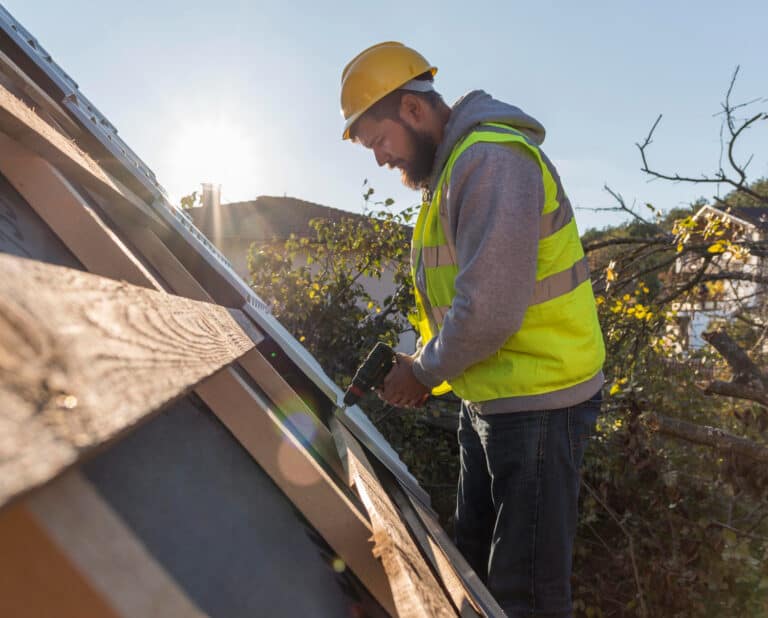Rolled rubber roofing is a popular roofing option for those looking for an affordable and durable roofing material. It is made from recycled tires and is designed to be long-lasting, weather-resistant, and easy to install. Rolled rubber roofing is a great choice for both residential and commercial buildings, and it is often used on flat or low-sloped roofs.

One of the benefits of rolled rubber roofing is its durability. It can withstand harsh weather conditions, such as heavy rain, snow, and wind, without cracking or warping. Additionally, it is resistant to damage from UV rays, which can cause other roofing materials to deteriorate over time. Rolled rubber roofing is also resistant to fire, making it a safe choice for buildings in areas prone to wildfires.
Another advantage of rolled rubber roofing is its ease of installation. It can be installed quickly and easily, even by those with little roofing experience. Rolled rubber roofing comes in large rolls that can be cut to fit the size and shape of any roof. It can also be installed directly over an existing roof, which saves time and money on removal and disposal of the old roof.
Basics of Rolled Rubber Roofing

Composition and Material
Rolled rubber roofing is a type of roofing material that is made from recycled rubber tires, sawdust, and slate dust. The rubber is processed into large rolls that can be cut to fit any size roof. The material is water-resistant, durable, and can withstand harsh weather conditions.
Rolled rubber roofing is available in different thicknesses and colors, making it a versatile option for any type of building. The material can be installed on both flat and sloped roofs, making it a popular choice for commercial and residential buildings.
Advantages and Benefits
Rolled rubber roofing has several advantages over other types of roofing materials. Firstly, it is an eco-friendly option as it is made from recycled materials. Secondly, it is cost-effective as it is cheaper than other roofing materials like asphalt shingles or metal roofing. Additionally, it is easy to install and requires minimal maintenance.
Another advantage of rolled rubber roofing is that it is highly durable and can last up to 50 years with proper maintenance. The material is also resistant to UV rays, which can cause other roofing materials to deteriorate over time. Rolled rubber roofing is also resistant to fire and can help prevent the spread of flames in case of a fire.
In summary, rolled rubber roofing is a durable, cost-effective, and eco-friendly option for roofing. It is made from recycled materials and is highly resistant to weather and fire. Its versatility and ease of installation make it a popular choice for both commercial and residential buildings.
Installation Process

Installing rolled rubber roofing requires proper surface preparation, rolling technique, and sealing and finishing. Here are the steps for a successful installation:
Surface Preparation
Before installation, the roof surface must be clean, dry, and free of debris. Any protruding nails or screws should be removed, and any cracks or holes should be filled and leveled. It is recommended to use a primer to ensure proper adhesion between the roofing material and the surface.
Rolling Technique
The rolled rubber roofing should be laid out flat on the roof surface, with a minimum of 4 inches overlap between each strip. The roofing material should be cut to fit the roof dimensions, leaving an additional 2-3 inches on each side for trimming. It is recommended to use a chalk line to ensure straight and even placement.
To prevent wrinkles and bubbles, the roofing material should be carefully rolled out and smoothed down with a heavy roller. The roller should be applied with firm pressure, starting from the center and working outwards towards the edges. Any wrinkles or bubbles that appear should be smoothed out immediately.
Sealing and Finishing
After the roofing material is properly laid out and rolled, the edges should be trimmed to fit the roof dimensions. The edges should be sealed with roofing cement to prevent water infiltration. Any protruding nails or screws should be covered with roofing cement as well.
Finally, the roofing material should be finished with a topcoat of elastomeric coating to protect against UV rays and weather damage. The coating should be applied evenly with a paint roller or sprayer, according to the manufacturer’s instructions.
By following these steps, rolled rubber roofing can be installed efficiently and effectively, providing a durable and long-lasting roofing solution.






